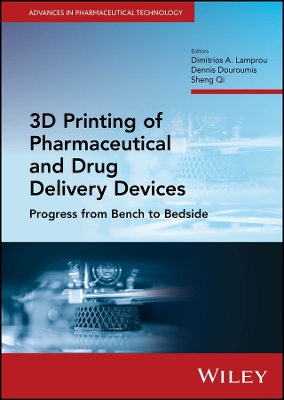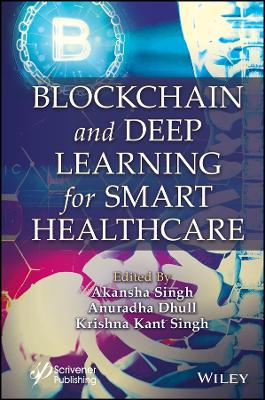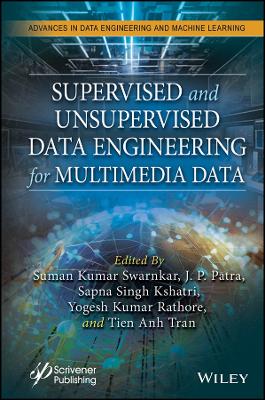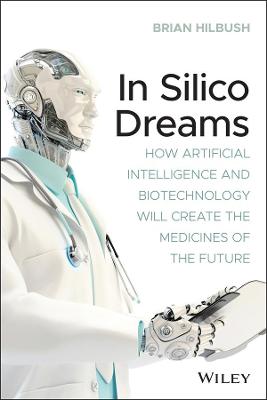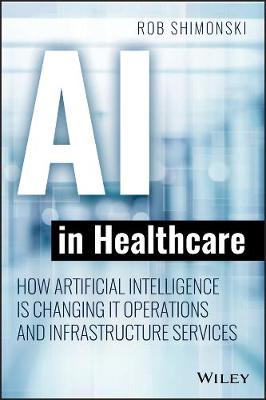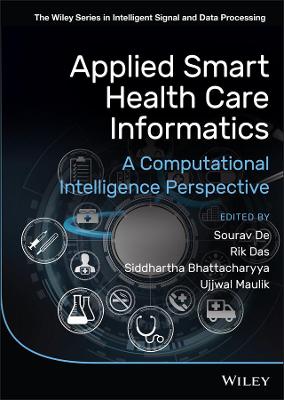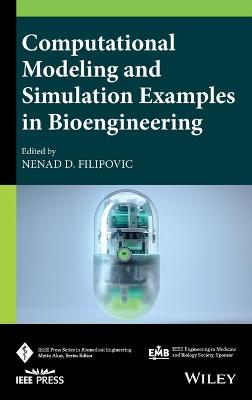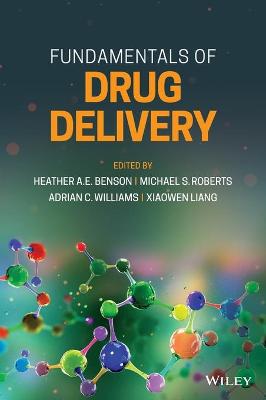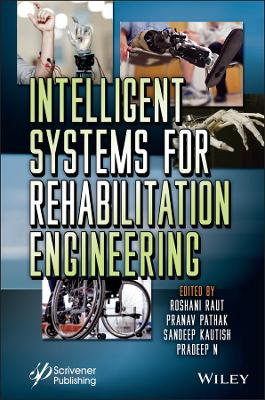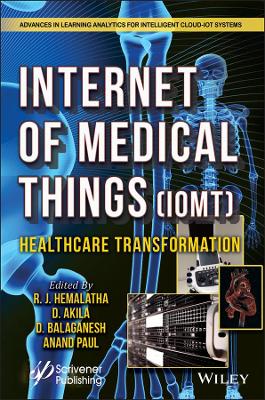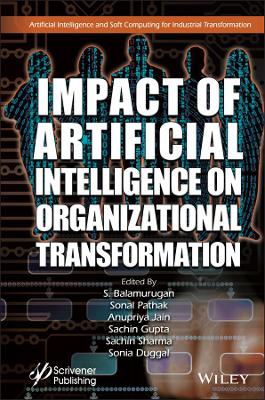Emerging Extended Reality Technologies for Industry 4.0
 -15%
portes grátis
-15%
portes grátis
Emerging Extended Reality Technologies for Industry 4.0
Early Experiences with Conception, Design, Implementation, Evaluation and Deployment
Tromp, Jolanda G.; Le, Dac-Nhuong; Le, Chung Van
John Wiley & Sons Inc
07/2020
272
Dura
Inglês
9781119654636
15 a 20 dias
670
List of Tables xv
Foreword xvii
Introduction xix
Preface xxiii
Acknowledgments xxv
Acronyms xxvii
Part I Extended Reality Education
1 Mixed Reality Use in Higher Education: Results from an International Survey 3
J. Riman, N. Winters, J. Zelenak, I. Yucel, J. G. Tromp
1.1 Introduction 4
1.2 Organizational Framework 4
1.3 Online Survey About MR Usage 5
1.4 Results 6
1.4.1 Use in Classrooms 8
1.4.2 Challenges 9
1.4.3 Examples of Research in Action 10
1.4.4 Hardware and Software for Use in Classrooms and Research 10
1.4.5 Challenges Described by Researcher Respondents 12
1.4.6 Anecdotal Responses about Challenges 12
1.5 Conclusion 13
References 15
2 Applying 3D VR Technology for Human Body Simulation to Teaching, Learning and Studying 17
Le Van Chung, Gia Nhu Nguyen, Tung Sanh Nguyen, Tri Huu Nguyen, Dac-Nhuong Le
2.1 Introduction 18
2.2 Related Works 18
2.3 3D Human Body Simulation System 19
2.3.1 The Simulated Human Anatomy Systems 19
2.3.2 Simulated Activities and Movements 20
2.3.3 Evaluation of the System 23
2.4 Discussion of Future Work 25
2.5 Conclusion 26
References 26
Part II Internet of Things
3 A Safety Tracking and Sensor System for School Buses in Saudi Arabia 31
Samah Abbas, Hajar Mohammed, Laila Almalki Maryam Hassan, Maram Meccawy
3.1 Introduction 32
3.2 Related Work 32
3.3 Data Gathering Phase 33
3.3.1 Questionnaire 34
3.3.2 Driver Interviews 35
3.4 The Proposed Safety Tracking and Sensor School Bus System 36
3.4.1 System Analysis and Design 37
3.4.2 User Interface Design 38
3.5 Testing and Results 41
3.6 Discussion and Limitation 42
3.7 Conclusions and Future Work 42
References 42
4 A Lightweight Encryption Algorithm Applied to a Quantized Speech Image for Secure IoT 45
Mourad Talbi
4.1 Introduction 46
4.2 Applications of IoT 46
4.3 Security Challenges in IoT 47
4.4 Cryptographic Algorithms for IoT 47
4.5 The Proposed Algorithm 48
4.6 Experimental Setup 50
4.7 Results and Discussion 52
4.8 Conclusion 57
References 58
Part III Mobile Technology
5 The Impact of Social Media Adoption on Entrepreneurial Ecosystem 63
Bodor Almotairy, Manal Abdullah, Rabeeh Abbasi
5.1 Introduction 64
5.2 Background 65
5.2.1 Small and Medium-Sized Enterprises (SMEs) 65
5.2.2 Social Media 65
5.2.3 Social Networks and Entrepreneurial Activities 66
5.3 Analysis Methodology 66
5.4 Understanding the Entrepreneurial Ecosystem 67
5.5 Social Media and Entrepreneurial Ecosystem 69
5.5.1 Social Media Platforms and Entrepreneurship 71
5.5.2 The Drivers of Social Media Adoption 71
5.5.3 The Motivations and Benefits for Entrepreneurs to Use Social Media 71
5.5.4 Entrepreneurship Activities Analysis Techniques in Social Media Networks 71
5.6 Research Gap and Recommended Solution 73
5.6.1 Research Gap 73
5.6.2 Recommended Solution 74
5.7 Conclusion 74
References 75
6 Human Factors for E-Health Training System: UX Testing for XR Anatomy Training App 81
Zhushun Timothy Cai, Oliver Medonza, Kristen Ray, Chung Van Le, Damian Schofield, Jolanda Tromp
6.1 Introduction 82
6.2 Mobile Learning Applications 82
6.3 Ease of Use and Usability 82
6.3.1 Effectiveness 83
6.3.2 Efficiency 83
6.3.3 Satisfaction 83
6.4 Methods and Materials 86
6.5 Results 89
6.5.1 Task Completion Rate (TCR) 89
6.5.2 Time-on-Task (TOT) 90
6.5.3 After-Scenario Questionnaire (ASQ) 91
6.5.4 Post-Study System Usability Questionnaire (PSSUQ) 93
6.6 Conclusion 93
References 94
Part IV Towards Digital Twins and Robotics
7 Augmented Reality at Heritage Sites: Technological Advances and Embodied Spatially Minded Interactions 101
Lesley Johnston, Romy Galloway, Jordan John Trench, Matthieu Poyade, Jolanda Tromp, Hoang Thi My
7.1 Introduction 102
7.2 Augmented Reality Devices 103
7.3 Detection and Tracking 105
7.4 Environmental Variation 106
7.5 Experiential and Embodied Interactions 109
7.6 User Experience and Presence in AR 114
7.7 Conclusion 115
References 116
8 TELECI Architecture for Machine Learning Algorithms Integration in an Existing LMS 121
V. Zagorskis, A. Gorbunovs, A. Kapenieks
8.1 Introduction 122
8.2 TELECI Architecture 123
8.2.1 TELECI Interface to a Real LMS 123
8.2.2 First RS Steps in the TELECI System 124
8.2.3 Real Student Data for VS Model 125
8.2.4 TELECI Interface to VS Subsystem 126
8.2.5 TELECI Interface to AI Component 128
8.3 Implementing ML Technique 128
8.3.1 Organizational Activities 128
8.3.2 Data Processing 129
8.3.3 Computing and Networking Resources 130
8.3.4 Introduction to Algorithm 130
8.3.5 Calibration Experiment 132
8.4 Learners' Activity Issues 133
8.5 Conclusion 136
References 137
Part V Big Data Analytics
9 Enterprise Innovation Management in Industry 4.0: Modeling Aspects 141
V. Babenko
9.1 Introduction 142
9.2 Conceptual Model of Enterprise Innovation Process Management 144
9.3 Formation of Restrictions for Enterprise Innovation Management Processes 147
9.4 Formation of Quality Criteria for Assessing Implementation of Enterprise Innovation Management Processes 148
9.5 Statement of Optimization Task of Implementation of Enterprise Innovation Management Processes 148
9.6 Structural and Functional Model for Solving the Task of Dynamic 150
9.7 Formulation of the Task of Minimax Program Management of Innovation Processes at Enterprises 152
9.8 General Scheme for Solving the Task of Minimax Program Management of Innovation Processes at the Enterprises 154
9.9 Model of Multicriteria Optimization of Program Management of Innovation Processes 156
9.10 Conclusion 161
References 162
10 Using Simulation for Development of Automobile Gas Diesel Engine Systems and their Operational Control 165
Mikhail G. Shatrov, Vladimir V. Sinyavski, Andrey Yu. Dunin, Ivan G. Shishlov, Sergei D. Skorodelov, Andrey L. Yakovenko
10.1 Introduction 166
10.2 Computer Modeling 167
10.3 Gas Diesel Engine Systems Developed 168
10.3.1 Electronic Engine Control System 168
10.3.2 Modular Gas Feed System 169
10.3.3 Common Rail Fuel System for Supply of the Ignition Portion of Diesel Fuel 169
10.4 Results and Discussion 172
10.4.1 Results of Diesel Fuel Supply System Simulation 172
10.4.2 Results of Engine Bed Tests 181
10.5 Conclusion 183
References 184
Part VI Towards Cognitive Computing
11 Classification of Concept Drift in Evolving Data Stream 189
Mashail Althabiti and Manal Abdullah
11.1 Introduction 190
11.2 Data Mining 190
11.3 Data Stream Mining 191
11.3.1 Data Stream Challenges 191
11.3.2 Features of Data Stream Methods 193
11.4 Data Stream Sources 193
11.5 Data Stream Mining Components 193
11.5.1 Input 194
11.5.2 Estimators 194
11.6 Data Stream Classification and Concept Drift 194
11.6.1 Data Stream Classification 194
11.6.2 Concept Drift 194
11.6.3 Data Stream Classification Algorithms with Concept Drift 196
11.6.4 Single Classifier 196
11.6.5 Ensemble Classifiers 197
11.6.6 Output 200
11.7 Datasets 200
11.8 Evaluation Measures 200
11.9 Data Stream Mining Tools 201
11.10 Data Stream Mining Applications 202
11.11 Conclusion 202
References 202
12 Dynamical Mass Transfer Systems in Buslaev Contour Networks with Conflicts 207
Marina Yashina, Alexander Tatashev, Ivan Kuteynikov
12.1 Introduction 208
12.2 Construction of Buslaev Contour Networks 210
12.3 Concept of Spectrum 211
12.4 One-Dimensional Contour Network Binary Chain of Contours 212
12.5 Two-Dimensional Contour Network-Chainmail 214
12.6 Random Process with Restrictions on the Contour with the Possibility of Particle Movement in Both Directions 218
12.7 Conclusion 218
References 219
13 Parallel Simulation and Visualization of Traffic Flows Using Cellular Automata Theory and QuasigasDynamic Approach 223
Antonina Chechina, Natalia Churbanova, Pavel Sokolov, Marina Trapeznikova, Mikhail German, Alexey Ermakov, Obidzhon Bozorov
13.1 Introduction 224
13.2 The Original CA Model 224
13.3 The Slow-to-Start Version of the CA Model 225
13.4 Numerical Realization 225
13.5 Test Predictions for the CA Model 229
13.6 The QGD Approach to Traffic Flow Modeling 230
13.7 Parallel Implementation of the QGD Traffic Model 232
13.8 Test Predictions for the QGD Traffic Model 232
13.9 Conclusion 235
References 236
List of Tables xv
Foreword xvii
Introduction xix
Preface xxiii
Acknowledgments xxv
Acronyms xxvii
Part I Extended Reality Education
1 Mixed Reality Use in Higher Education: Results from an International Survey 3
J. Riman, N. Winters, J. Zelenak, I. Yucel, J. G. Tromp
1.1 Introduction 4
1.2 Organizational Framework 4
1.3 Online Survey About MR Usage 5
1.4 Results 6
1.4.1 Use in Classrooms 8
1.4.2 Challenges 9
1.4.3 Examples of Research in Action 10
1.4.4 Hardware and Software for Use in Classrooms and Research 10
1.4.5 Challenges Described by Researcher Respondents 12
1.4.6 Anecdotal Responses about Challenges 12
1.5 Conclusion 13
References 15
2 Applying 3D VR Technology for Human Body Simulation to Teaching, Learning and Studying 17
Le Van Chung, Gia Nhu Nguyen, Tung Sanh Nguyen, Tri Huu Nguyen, Dac-Nhuong Le
2.1 Introduction 18
2.2 Related Works 18
2.3 3D Human Body Simulation System 19
2.3.1 The Simulated Human Anatomy Systems 19
2.3.2 Simulated Activities and Movements 20
2.3.3 Evaluation of the System 23
2.4 Discussion of Future Work 25
2.5 Conclusion 26
References 26
Part II Internet of Things
3 A Safety Tracking and Sensor System for School Buses in Saudi Arabia 31
Samah Abbas, Hajar Mohammed, Laila Almalki Maryam Hassan, Maram Meccawy
3.1 Introduction 32
3.2 Related Work 32
3.3 Data Gathering Phase 33
3.3.1 Questionnaire 34
3.3.2 Driver Interviews 35
3.4 The Proposed Safety Tracking and Sensor School Bus System 36
3.4.1 System Analysis and Design 37
3.4.2 User Interface Design 38
3.5 Testing and Results 41
3.6 Discussion and Limitation 42
3.7 Conclusions and Future Work 42
References 42
4 A Lightweight Encryption Algorithm Applied to a Quantized Speech Image for Secure IoT 45
Mourad Talbi
4.1 Introduction 46
4.2 Applications of IoT 46
4.3 Security Challenges in IoT 47
4.4 Cryptographic Algorithms for IoT 47
4.5 The Proposed Algorithm 48
4.6 Experimental Setup 50
4.7 Results and Discussion 52
4.8 Conclusion 57
References 58
Part III Mobile Technology
5 The Impact of Social Media Adoption on Entrepreneurial Ecosystem 63
Bodor Almotairy, Manal Abdullah, Rabeeh Abbasi
5.1 Introduction 64
5.2 Background 65
5.2.1 Small and Medium-Sized Enterprises (SMEs) 65
5.2.2 Social Media 65
5.2.3 Social Networks and Entrepreneurial Activities 66
5.3 Analysis Methodology 66
5.4 Understanding the Entrepreneurial Ecosystem 67
5.5 Social Media and Entrepreneurial Ecosystem 69
5.5.1 Social Media Platforms and Entrepreneurship 71
5.5.2 The Drivers of Social Media Adoption 71
5.5.3 The Motivations and Benefits for Entrepreneurs to Use Social Media 71
5.5.4 Entrepreneurship Activities Analysis Techniques in Social Media Networks 71
5.6 Research Gap and Recommended Solution 73
5.6.1 Research Gap 73
5.6.2 Recommended Solution 74
5.7 Conclusion 74
References 75
6 Human Factors for E-Health Training System: UX Testing for XR Anatomy Training App 81
Zhushun Timothy Cai, Oliver Medonza, Kristen Ray, Chung Van Le, Damian Schofield, Jolanda Tromp
6.1 Introduction 82
6.2 Mobile Learning Applications 82
6.3 Ease of Use and Usability 82
6.3.1 Effectiveness 83
6.3.2 Efficiency 83
6.3.3 Satisfaction 83
6.4 Methods and Materials 86
6.5 Results 89
6.5.1 Task Completion Rate (TCR) 89
6.5.2 Time-on-Task (TOT) 90
6.5.3 After-Scenario Questionnaire (ASQ) 91
6.5.4 Post-Study System Usability Questionnaire (PSSUQ) 93
6.6 Conclusion 93
References 94
Part IV Towards Digital Twins and Robotics
7 Augmented Reality at Heritage Sites: Technological Advances and Embodied Spatially Minded Interactions 101
Lesley Johnston, Romy Galloway, Jordan John Trench, Matthieu Poyade, Jolanda Tromp, Hoang Thi My
7.1 Introduction 102
7.2 Augmented Reality Devices 103
7.3 Detection and Tracking 105
7.4 Environmental Variation 106
7.5 Experiential and Embodied Interactions 109
7.6 User Experience and Presence in AR 114
7.7 Conclusion 115
References 116
8 TELECI Architecture for Machine Learning Algorithms Integration in an Existing LMS 121
V. Zagorskis, A. Gorbunovs, A. Kapenieks
8.1 Introduction 122
8.2 TELECI Architecture 123
8.2.1 TELECI Interface to a Real LMS 123
8.2.2 First RS Steps in the TELECI System 124
8.2.3 Real Student Data for VS Model 125
8.2.4 TELECI Interface to VS Subsystem 126
8.2.5 TELECI Interface to AI Component 128
8.3 Implementing ML Technique 128
8.3.1 Organizational Activities 128
8.3.2 Data Processing 129
8.3.3 Computing and Networking Resources 130
8.3.4 Introduction to Algorithm 130
8.3.5 Calibration Experiment 132
8.4 Learners' Activity Issues 133
8.5 Conclusion 136
References 137
Part V Big Data Analytics
9 Enterprise Innovation Management in Industry 4.0: Modeling Aspects 141
V. Babenko
9.1 Introduction 142
9.2 Conceptual Model of Enterprise Innovation Process Management 144
9.3 Formation of Restrictions for Enterprise Innovation Management Processes 147
9.4 Formation of Quality Criteria for Assessing Implementation of Enterprise Innovation Management Processes 148
9.5 Statement of Optimization Task of Implementation of Enterprise Innovation Management Processes 148
9.6 Structural and Functional Model for Solving the Task of Dynamic 150
9.7 Formulation of the Task of Minimax Program Management of Innovation Processes at Enterprises 152
9.8 General Scheme for Solving the Task of Minimax Program Management of Innovation Processes at the Enterprises 154
9.9 Model of Multicriteria Optimization of Program Management of Innovation Processes 156
9.10 Conclusion 161
References 162
10 Using Simulation for Development of Automobile Gas Diesel Engine Systems and their Operational Control 165
Mikhail G. Shatrov, Vladimir V. Sinyavski, Andrey Yu. Dunin, Ivan G. Shishlov, Sergei D. Skorodelov, Andrey L. Yakovenko
10.1 Introduction 166
10.2 Computer Modeling 167
10.3 Gas Diesel Engine Systems Developed 168
10.3.1 Electronic Engine Control System 168
10.3.2 Modular Gas Feed System 169
10.3.3 Common Rail Fuel System for Supply of the Ignition Portion of Diesel Fuel 169
10.4 Results and Discussion 172
10.4.1 Results of Diesel Fuel Supply System Simulation 172
10.4.2 Results of Engine Bed Tests 181
10.5 Conclusion 183
References 184
Part VI Towards Cognitive Computing
11 Classification of Concept Drift in Evolving Data Stream 189
Mashail Althabiti and Manal Abdullah
11.1 Introduction 190
11.2 Data Mining 190
11.3 Data Stream Mining 191
11.3.1 Data Stream Challenges 191
11.3.2 Features of Data Stream Methods 193
11.4 Data Stream Sources 193
11.5 Data Stream Mining Components 193
11.5.1 Input 194
11.5.2 Estimators 194
11.6 Data Stream Classification and Concept Drift 194
11.6.1 Data Stream Classification 194
11.6.2 Concept Drift 194
11.6.3 Data Stream Classification Algorithms with Concept Drift 196
11.6.4 Single Classifier 196
11.6.5 Ensemble Classifiers 197
11.6.6 Output 200
11.7 Datasets 200
11.8 Evaluation Measures 200
11.9 Data Stream Mining Tools 201
11.10 Data Stream Mining Applications 202
11.11 Conclusion 202
References 202
12 Dynamical Mass Transfer Systems in Buslaev Contour Networks with Conflicts 207
Marina Yashina, Alexander Tatashev, Ivan Kuteynikov
12.1 Introduction 208
12.2 Construction of Buslaev Contour Networks 210
12.3 Concept of Spectrum 211
12.4 One-Dimensional Contour Network Binary Chain of Contours 212
12.5 Two-Dimensional Contour Network-Chainmail 214
12.6 Random Process with Restrictions on the Contour with the Possibility of Particle Movement in Both Directions 218
12.7 Conclusion 218
References 219
13 Parallel Simulation and Visualization of Traffic Flows Using Cellular Automata Theory and QuasigasDynamic Approach 223
Antonina Chechina, Natalia Churbanova, Pavel Sokolov, Marina Trapeznikova, Mikhail German, Alexey Ermakov, Obidzhon Bozorov
13.1 Introduction 224
13.2 The Original CA Model 224
13.3 The Slow-to-Start Version of the CA Model 225
13.4 Numerical Realization 225
13.5 Test Predictions for the CA Model 229
13.6 The QGD Approach to Traffic Flow Modeling 230
13.7 Parallel Implementation of the QGD Traffic Model 232
13.8 Test Predictions for the QGD Traffic Model 232
13.9 Conclusion 235
References 236

